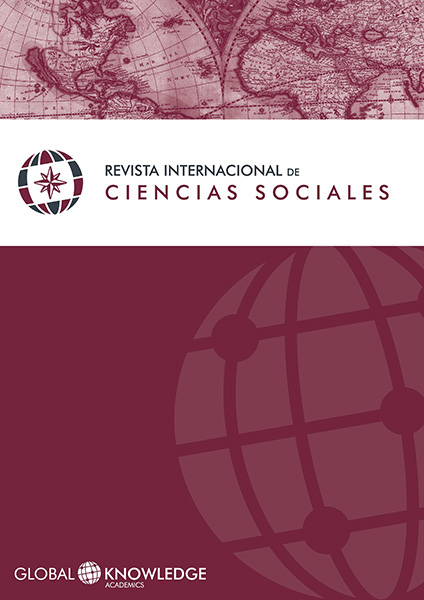Obstacles and Challenges of the Evaluation Systems in Latin America: the Cases of Mexico and Colombia)
DOI:
https://doi.org/10.37467/gka-revsocial.v5.1344Keywords:
Public Administration, Evaluation, AccountabilityAbstract
In recent decades, economic and social transformations brought the reform of the state and of the public administration to the center of the political agenda in several countries, promoting the rethink and the modernization of the public management internal processes, as well as the adoption of new tools able to improve mechanisms of economy, dynamism, efficiency and public value. In this sense, the implementation of programs and policies evaluation systems assumed role of fundamental importance in the reform processes around the world, including inside the Latin American scene. They are directly linked to the processes of accountability and performance measurement, focusing on the collection, analysis and interpretation of information to evaluate the design, implementation, operation, effects, justifications and social implications of programs and public projects, opening doors for an important role of feedback on the quality of development and management. Thus, this paper aims to understand to what extent these systems meets the functions expected of them and what obstacles are compromising its consolidation.
Downloads
Global Statistics ℹ️
|
555
Views
|
1029
Downloads
|
|
1584
Total
|
|
References
Acuña, C. H. y Repetto, F. (2009). Un aporte metodológico para comprender (y mejorar) la lógica político-institucional del combate a la pobreza en América Latina. En: Navarro, Freddy, N. y Cantú, V. G. (Coords.). Política pública y democracia en América Latina: del análisis a la implementa-ción. México, D.F.: M. A. Porrúa.
Chelimsky, E. (1985). Comparing and Contrasting Auditing and Evaluation: Some Notes on their Relationship. Evaluation Review, 9, 438-508. DOI: https://doi.org/10.1177/0193841X8500900406
Diario Oficial de la Federación (2004). Ley General de desarrollo social, México. Disponible en: http://www.diputados.gob.mx/LeyesBiblio/pdf/264.pdf
Diario Oficial de la Federación (2007). Lineamientos Generales para la Evaluación de los Programas Federales de la Adminis-tración Pública Federal, México. Disponible en:
http://www.coneval.gob.mx/rw/resource/coneval/eval_mon/361.pdf
Diario Oficial de la Federación (2011). Mecanismo para el seguimiento a los aspectos susceptibles de mejora derivados de informes y evaluaciones a los programas presupuestarios de la Administración Pública Federal, México. Disponible en:
http://www.coneval.gob.mx/Normateca/Paginas/Evaluacion.aspx
Jann, W. y Wegrich, K. (2007). Theories of the policy cycle. Fischer, F. et al. (Eds.). Handbook of public policy analysis: theory, politics and methods. (pp. 43-62). Boca Raton, Estados Uni-dos: CRC Press. DOI: https://doi.org/10.1201/9781420017007.pt2
Durazo, I. A. S. y García, F. M. (2010). La evaluación de los programas públicos en México: una mirada crítica al CONEVAL. Tribuna de Economía, (857), 153-161.
DNP (2012). Guía para la Evaluación de Políticas Públicas. Bogotá: Serie de Guías Metodológicas Sinergia. Disponible en: https://sinergia.dnp.gov.co/Sinergia/Archivos/c40a73d3-baf9-4a26-8aad-81e3baa23bf5/Gu%C3%ADas%20Tipos%20de%20Evaluaci%C3%B3n.pdf
DNP (2010). 15 años del Sistema Nacional de Evaluación de Gestión y Resultados – SINERGIA: Una mirada desde las evaluaciones de política pública más relevantes. Bogotá: Serie 1 – Evolución de SINERGIA y Evaluaciones en Administración del Estado. Disponible en: http://siare.clad.org/siare/innotend/evaluacion/colombia/c1.pdf
Kelly, G. y Muers, S. (2002). Creating Public Value: an analytical framework for public service reform. London: Strategy Unit - Cabinet Office. Disponible en:
Kusek, J. Z. y Rist, R. C. (2004). Ten Steps to a Result: Based Monitoring and Evaluation System. Washington, Estados Unidos: The World Bank.
McKay, K. (2006). Diagnóstico del Sistema Nacional de S&E de Colombia: SINERGIA. Serie de Documentos de Trabajo sobre Desarrollo de la Capacidad de Evaluación, Nº 17. Washing-ton, Estados Unidos: Banco Mundial.
Ocampo, J. A. (1996). Presentación. Hacia una gestión pública orientada a resultados. Bogotá, Colombia: Departamento Nacional de Planeación.
ONU (1984). Pautas básicas para el diseño y uso de sistemas de seguimiento y evaluación de pro-yectos y programas de desarrollo rural en países en desarrollo, Roma, Italia: ONU.
Paula, A. P. (2012). Por uma nova gestão pública: limites e potencialidades da experiência contem-porânea. Rio de Janeiro, Brasil: Editora FGV.
Rainie, L. y Purcell, K. (2011). How the public perceives community information systems. Washing-ton DC, Estados Unidos: Pew Internet Research Institute.
Reyes, N. H. (2008). Sistema de Monitoreo y Evaluación basado en resultados: Caso México. Ciu-dad de México, México: CONEVAL. Disponible en:
Rossi, P. H. y Freeman, H. E. (1989). Evaluation: A systematic approach. Michigan, Estados Unidos: Sage Publications.
Stufflebeam, D. L. (2001). The Metaevaluation Imperative. American Journal of Evaluation, 22(2), 183-209. DOI: https://doi.org/10.1177/109821400102200204
Villanueva, L. F. A. (2009). Marco para el análisis de las políticas públicas. Navarro, Freddy N. y Cantú, Vidal Garza (Coords.). Política pública y democracia en América Latina: del análi-sis a la implementación. México, D.F., México: M. A. Porrúa.
Downloads
Published
How to Cite
Issue
Section
License
Those authors who publish in this journal accept the following terms:
-
Authors retain copyright.
-
Authors transfer to the journal the right of first publication. The journal also owns the publishing rights.
-
All published contents are governed by an Attribution-NoDerivatives 4.0 International License.
Access the informative version and legal text of the license. By virtue of this, third parties are allowed to use what is published as long as they mention the authorship of the work and the first publication in this journal. If you transform the material, you may not distribute the modified work. -
Authors may make other independent and additional contractual arrangements for non-exclusive distribution of the version of the article published in this journal (e.g., inclusion in an institutional repository or publication in a book) as long as they clearly indicate that the work was first published in this journal.
- Authors are allowed and recommended to publish their work on the Internet (for example on institutional and personal websites), following the publication of, and referencing the journal, as this could lead to constructive exchanges and a more extensive and quick circulation of published works (see The Effect of Open Access).













